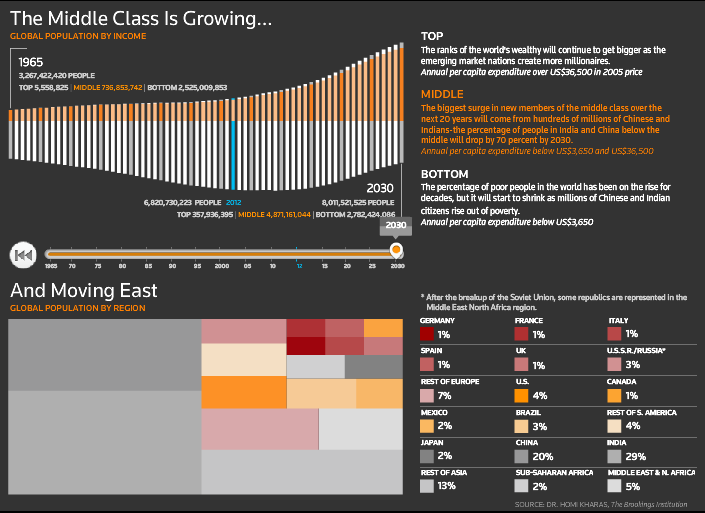Most Americans would consider themselves “middle class”. But in many other countries, that status is in the minority—people are literally either rich or poor, with not very many in the “middle”. Prosperity is rapidly expanding the middle class around the world and we are just beginning to understand the social impact this rapid swelling will bring. Globally, the size of the middle class could increase from 1.8 billion people to 3.2 billion by 2020 and to 4.9 billion by 2030. (The Emerging Middle Class in Developing Countries OECD, 2010)
It is crucial that we study the implications of this macro trend and anticipate the growing pains that are sure to come along with it as we assess the present—and future—of global missions. As prosperity and material wealth grows, it brings with it a destructive price tag. Exposure and access to new wealth often mean trading in traditional values and giving up time with family. Having a taste of “the better life” might disappoint or breed discontentment and an obsession for more, more, more!
A shift into the middle class also brings with it new problems—instead of needing to focus on the symptoms of poverty such as lack of education, clean water, nutrition etc. we are now having to deal with sociological illnesses such as depression, loneliness, lack of community and younger generations’ prosperity alienating traditional hierarchies.
A move into the middle class also affects societal, political and religious values. As standards of living rise, so do expectations on government. A wealthier population is a more educated and empowered population that will demand pluralism and basic individual rights that poorer generations never did.
As the middle class expands, they expect to get not only jobs, but good jobs. The isolationism and powerlessness of the poor allowed for monopoly of power by political and religious leaders, but we will see those authority structures begin to erode, except in extreme situations.
What does this mean for the Church and its focus on missions? It means we need to begin to see the world’s greatest needs as sociological not physical. With the world’s poor on the decline, missions focus—and missions dollars—should be spent on continually growing the capacity of the emerging middle class churches around the world so that they can more effectively meet the needs of their people through sustainable investment in education, job creation and economic development.





1 Comment
Rob, you are right. The mission and the church need to seriously and strategically focus on middle classes, particularly in India and China. India has above 300 million middle class and growing fast.However, the mission engagement with middle classes is almost negligible as the mission focus is predominantly rural, and Dalit and Tribal oriented.